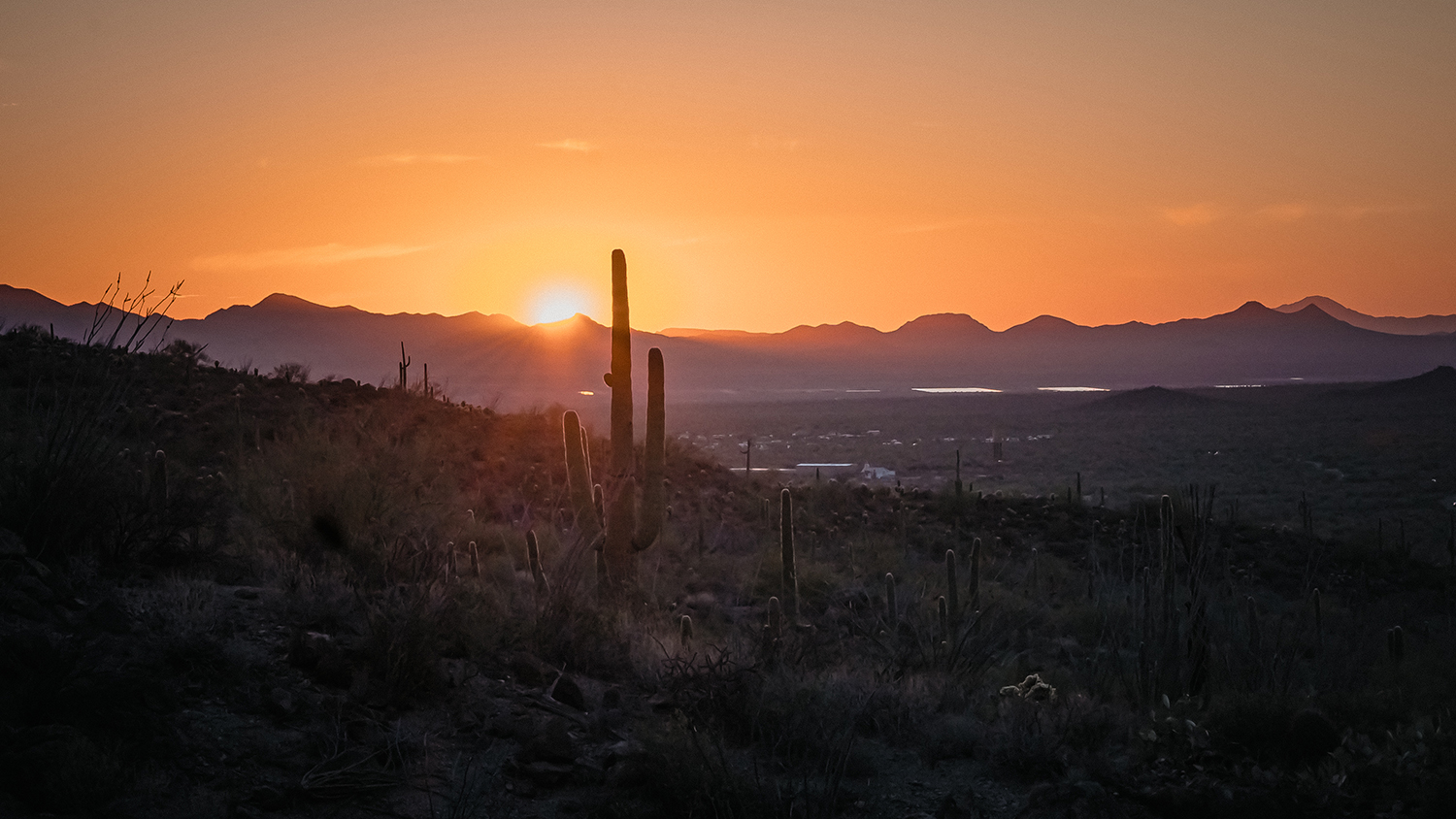
Southern Arizona is defined by its distinctive desert scenery, wide open spaces, and a surprising variety of environments to photograph. Around Tucson, the Sonoran Desert is on full display, with forests of saguaro cacti, rugged mountains, local wildlife, and skies that light up at sunrise and sunset. While it is easy to picture endless sand and heat, you will find new scenes and changing conditions in every direction. From winding mountain drives to historic city streets, there is plenty here to keep your camera busy.
This guide highlights some of the best spots in and around Tucson, Arizona for photography. You will need a car to reach most of these locations, and it is worth preparing for the conditions. Weather in southern Arizona can be unpredictable, with temperatures shifting quickly and the sun often intense, even in cooler months. If you can, visit in spring or autumn, when temperatures are moderate and exploring is much more comfortable.
Thanks to local Tucson Photographer, Rebecca Clark Andrino for writing and photographing this guide. You can find Rebecca on Instagram via @rc_photostudios
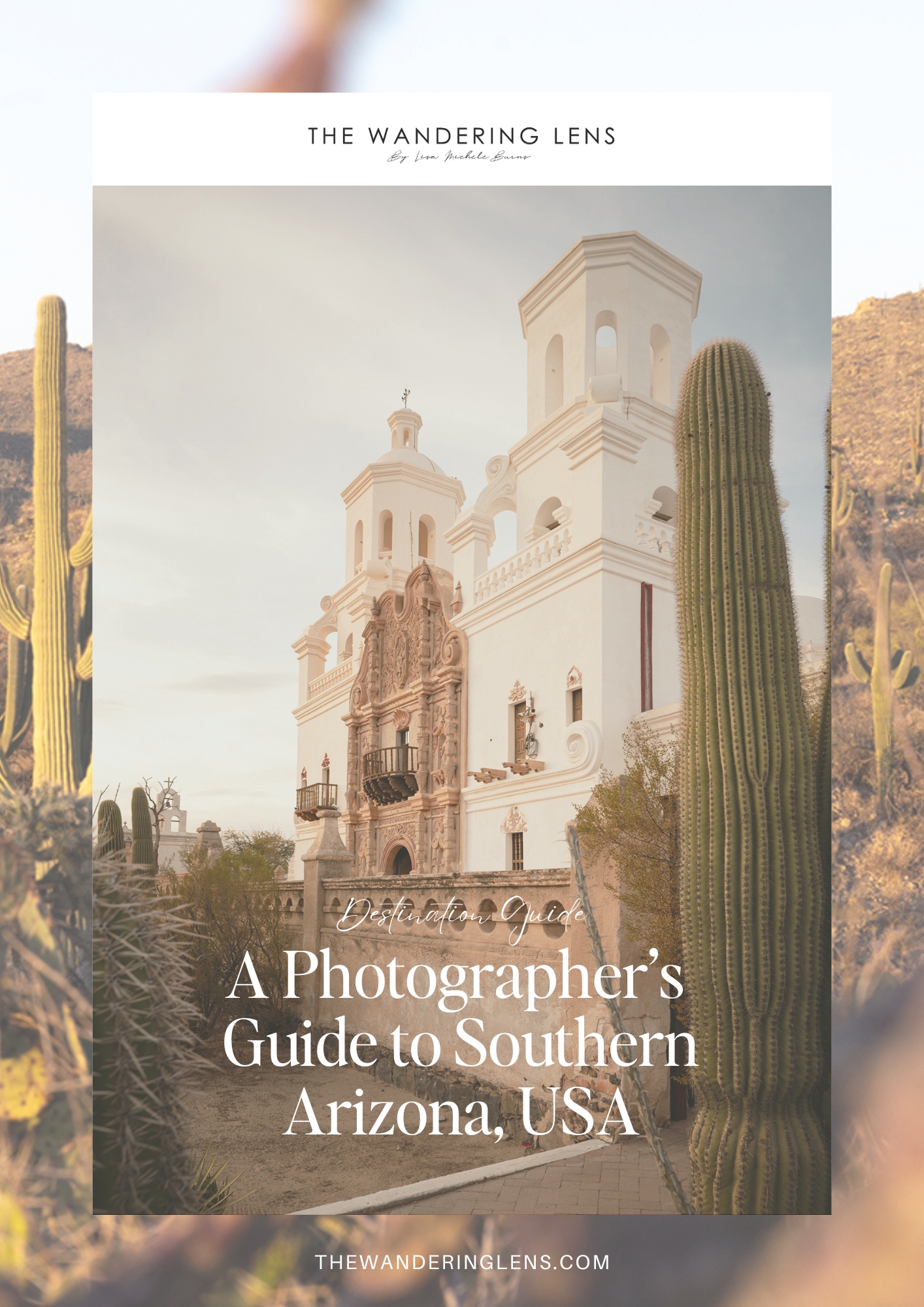
Location: Gates Pass
Gates Pass is a dreamy landscape to photograph with its vibrant golden hour glow and rusted colored earth tones making it one of the best places in Tucson to catch the late afternoon and evening light. The drive is part of the experience, with a narrow and winding road climbing over the Tucson Mountains. Saguaro cacti line the route, and you are treated to sweeping desert views in every direction. It is easy to see why both photographers and locals head here to watch the sunset.
If you want a good spot for golden hour, plan to arrive at least 90 minutes before sunset. This gives you time to explore the various pullouts along the road, each offering a slightly different view of the landscape. The main parking area is popular and often crowded, but some of the best images come from wandering a bit further. Walk a trail or find a quieter pullout and you will have more space to frame your shots.
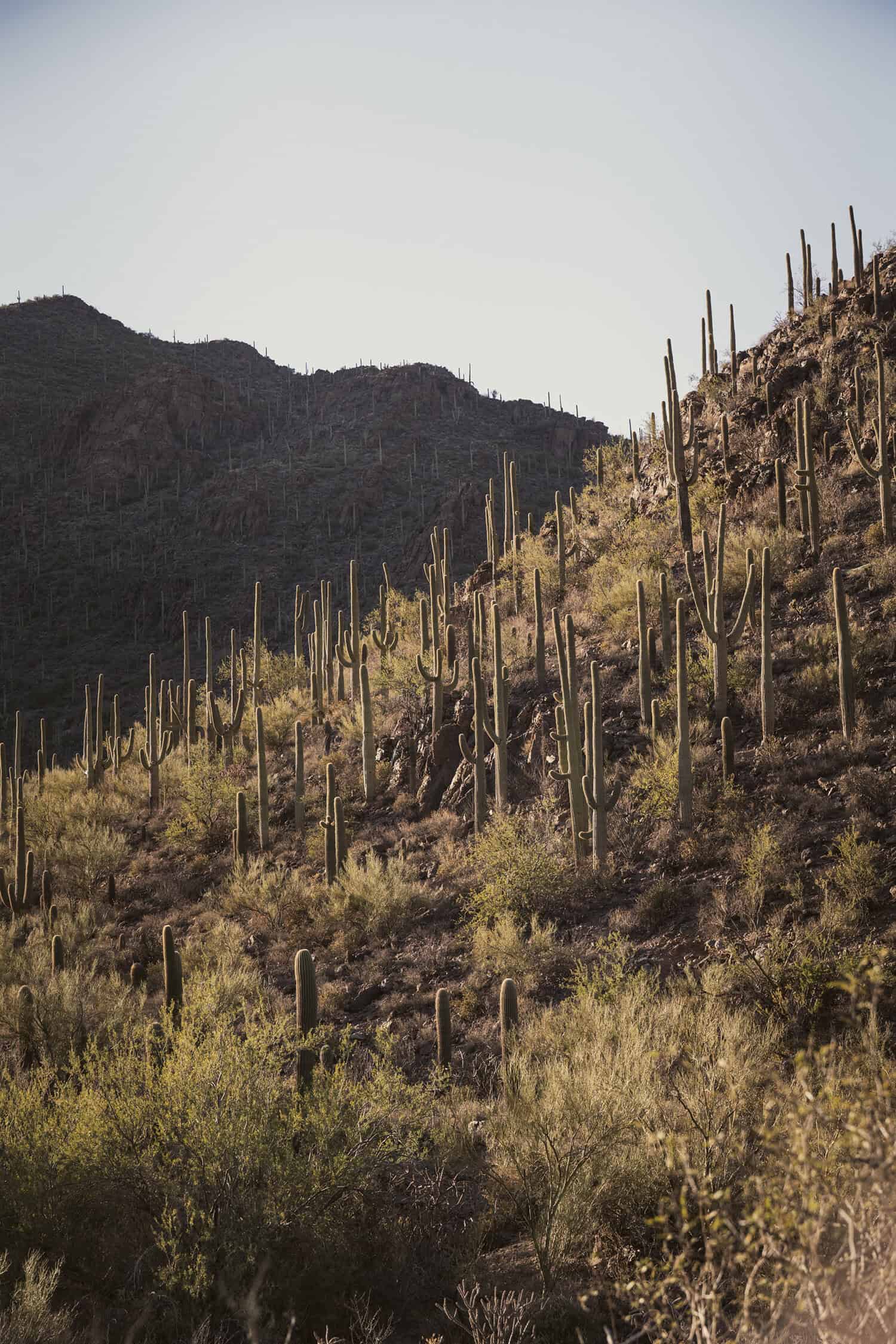
The scenery changes quickly as the sun gets lower. Golden light spreads across the hills, the sky turns colour, and the desert shifts by the minute. A 24-70mm lens works well for this area, giving you both wide and tighter framing options without needing to switch gear. If there are clouds in the sky, even better, as they catch the last light and can turn a regular sunset into something much more dramatic.
You will notice plenty of others doing the same thing: photographers, groups gathering for picnics, or people taking in the view. The atmosphere is relaxed and friendly, and there is a sense that everyone is there for the same reason, to enjoy some of the best light in Tucson.
Once the sun has set, you can continue along the road towards the Arizona-Sonora Desert Museum or Old Tucson Studios, both of which are nearby and worth a visit if you have time.
Photo Tip: A 24-70mm lens gives you the flexibility you need at Gates Pass. Go wide to show the landscape or zoom in for details of cacti and distant mountains. If you are shooting at sunset, try to include some foreground elements like cholla, rocks, or saguaro silhouettes to add depth to your images. If you catch some clouds, use them to add interest to the sky.

Location: Barrio Viejo
On the edge of downtown Tucson, Barrio Viejo is a neighbourhood that blends history with colour and culture. Just south of the Tucson Convention Center, this district covers about 20 blocks, and is known for its original adobe row houses, each painted in bright, bold colours that give the area its charm. Walking through these streets, you get the sense of a traditional Mexican village, with old buildings now serving as offices, studios, restaurants, and homes.
Barrio Viejo is one of Tucson’s most culturally rich and architecturally interesting neighbourhoods. To get a deeper sense of its history, you can book a one-mile walking tour through the Presidio San Agustín del Tucson Museum. The tour explores the area’s architecture and shares stories of the people and businesses that make it unique.
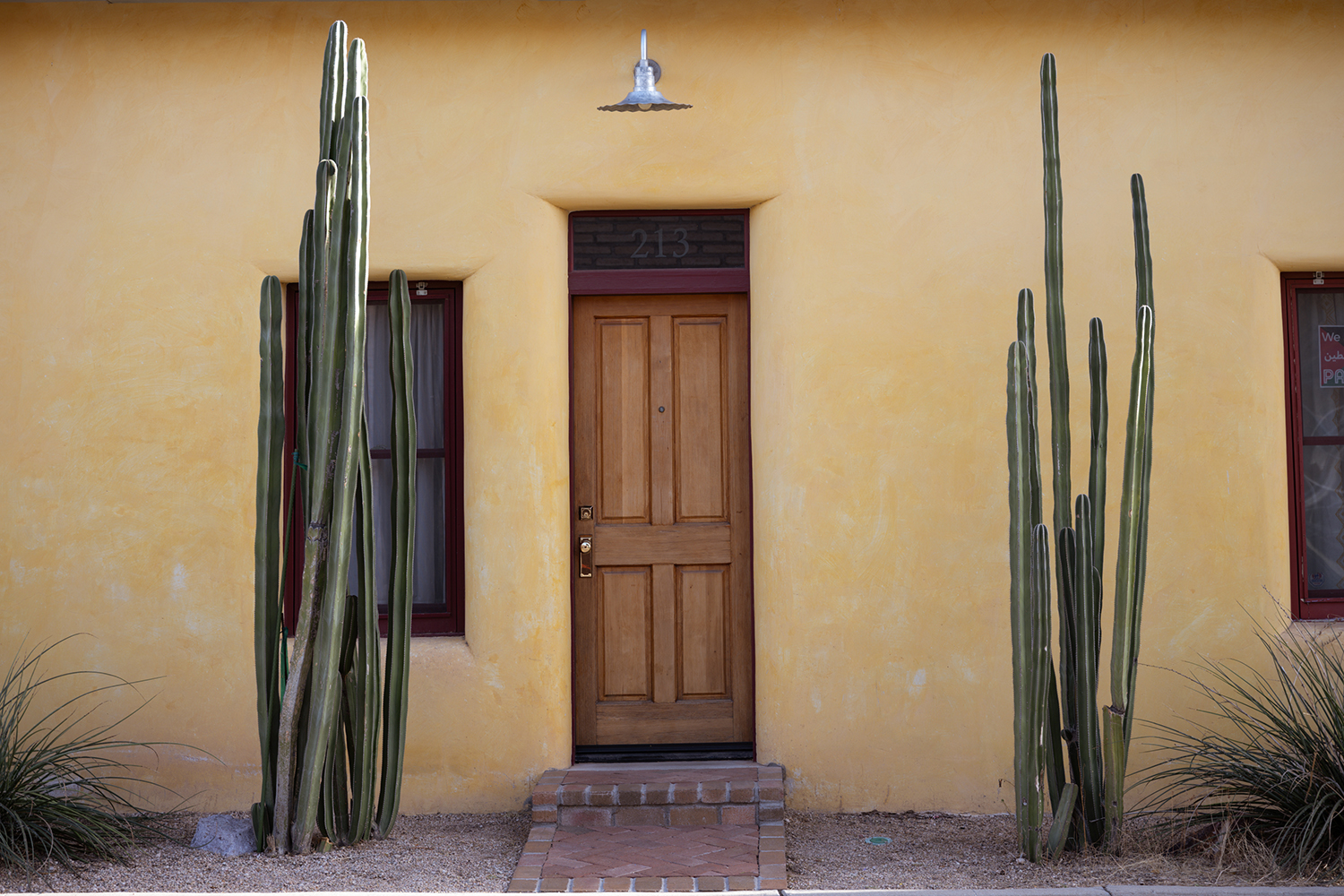
One of the barrio’s landmarks is the historic Teatro Carmen, which was recently named one of Condé Nast Traveler’s “Best Places to Go in North America 2024.” Located at Main and Cushing, the theatre is being restored and will reopen in the next few years, featuring a reimagined stage, live performances, film screenings, dining, and outdoor events. The restoration is bringing out the building’s original 1915 brickwork and aims to keep its history alive while giving it new life.
Photo Tip:
I originally brought a 50mm prime lens to photograph Barrio Viejo, but quickly found it was too limiting for the narrow streets. A 24-70mm lens worked much better, allowing me to capture the colourful facades and details of the adobe doorways. If you can, photograph in the softer light of morning or two hours before sunset, when the colours really stand out and shadows are less harsh. Midday can be good for dramatic contrast, but the light fades fast, so timing is important. The doors and windows of many adobe homes are great subjects, and including a person in the frame can add interest. The neighbourhood is a popular spot for photographers, especially on weekends, and the cactus gardens create interesting shapes and textures for your shots.
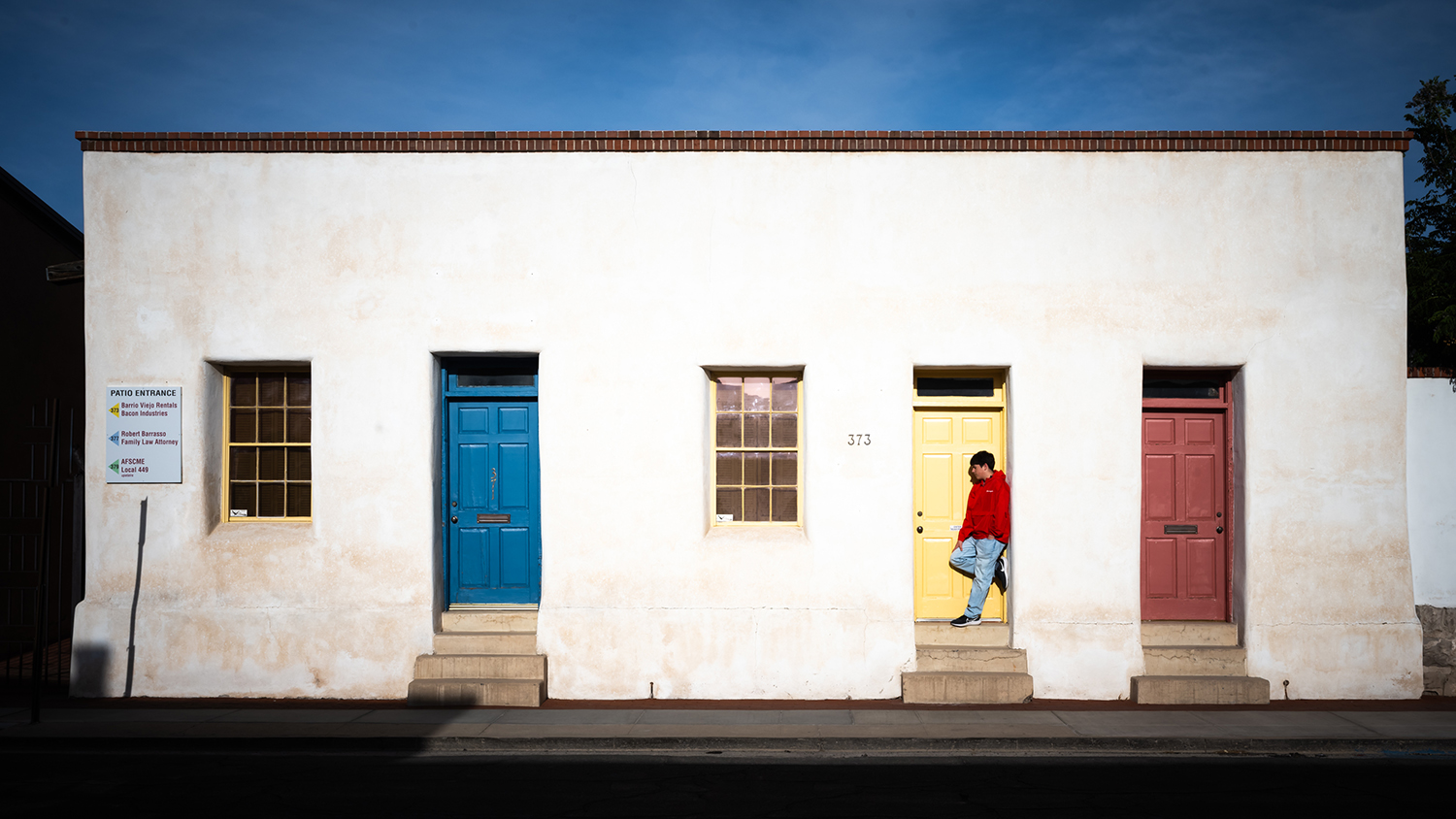
Location: Mount Lemmon
While Tucson is known for its saguaros, the landscape changes dramatically as you drive up into the Catalina Mountains towards Mount Lemmon. The Catalina Highway winds its way up to over 9,000 feet, and along the way you will notice the temperature dropping, which is especially welcome in summer. As you gain elevation, saguaros disappear and are replaced by rocky formations and, eventually, dense stands of evergreens.
The road is scenic, with plenty of pullouts and trails for taking in the views or snapping photos. Activities like camping, hiking, cycling, and even horseback riding are all popular on Mount Lemmon. We stopped at Molino Basin Campgrounds for a break, then checked out views at Thimble Peak Vista and Cataract Vista before heading to Windy Point for sunset. The landscape changes with elevation, and the rock formations near Windy Point are especially dramatic, almost like natural sculptures. By sunset, the area is busy with photographers, families, and even people with telescopes. The rocky outcrops make great subjects for textures, shapes, and framing, and it is easy to see why it is such a popular spot.
Photo Tip:
Mount Lemmon offers a lot of variety, so you can bring a range of lenses, but I often stick with a 24-70mm zoom to keep things simple. This gives you the flexibility to shoot wide landscapes or zoom in on details and natural framing. If you want to photograph people in the landscape, this lens works well for that too. For sunset, a 14-24mm wide angle can be great to make the most of Arizona’s colourful skies, but I rarely use a telephoto here. We arrived about an hour before sunset and had plenty of time to find a good spot and capture the changing light. It is also a good place to try time-lapse shots if you have a tripod.
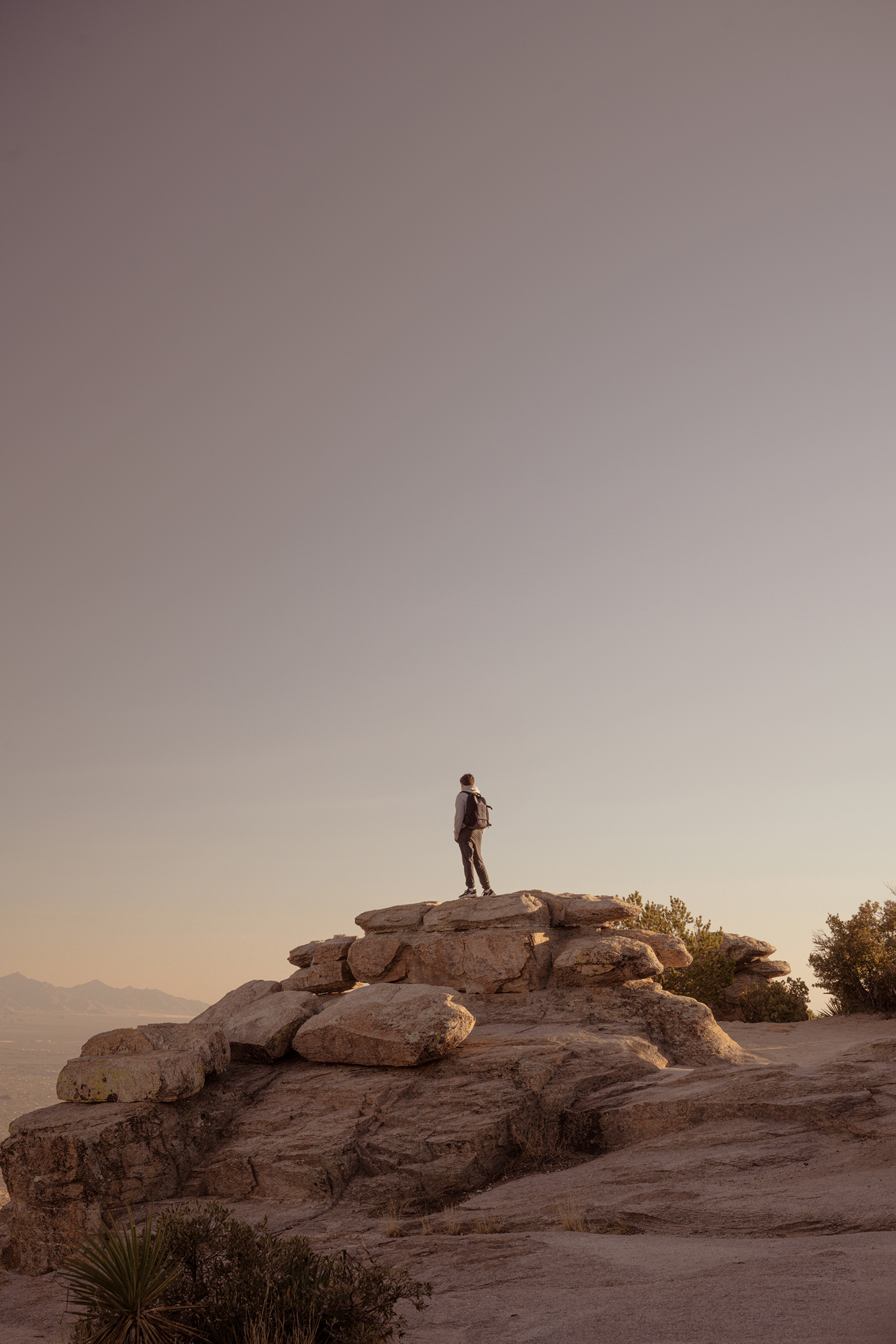

Location: Downtown Tucson
Downtown Tucson is compact but full of energy. The Sonoran Desert culture gives the city a unique personality, and there is always something happening, whether it is dining, events, or simply enjoying the street life. Murals are a big part of the downtown experience, and you will see vibrant artwork across many buildings.
Linda Ronstadt, the Grammy-winning vocalist, has deep roots in Tucson, and her legacy is recognised around the city. The Ronstadt Transit Center is named in honour of her family’s contributions, and you can find a mural dedicated to her downtown. In 2019, the city even declared “Linda Ronstadt Day” to celebrate her impact on music and culture.

Tucson is also full of history. The Hotel Congress, built in 1918, became famous in 1934 when a fire led to the capture of the gangster John Dillinger and his gang. Much of its original charm remains, with a quirky café and a jazz venue, The Century Room, that are popular with locals and visitors. With its blend of historic character and busy nightlife, Hotel Congress is still one of the city’s favourite meeting spots.
Photo Tips:
Early morning or sunset is the best time for photography, when the warm tones pop against the city’s murals. Midday sun can be harsh, but if you are after high-contrast portraits or street scenes, it can also work. Night photography is also rewarding, with creative opportunities to capture neon signs and city lights. Places you should not miss include Hotel Congress for its vintage vibe, the Pima County Courthouse with its golden architecture, and Congress Street and 4th Avenue for neon signs, old storefronts, and street art. The Snake Bridge is also fun for playing with perspective and silhouettes.
For gear, bring a wide-angle lens for street shots and murals, and a 50mm or 85mm for portraits and bokeh. A portable reflector can help with portraits, and a tripod is useful for night and neon photography. Always carry water, as Tucson can be hot and the sun is strong, even in winter.
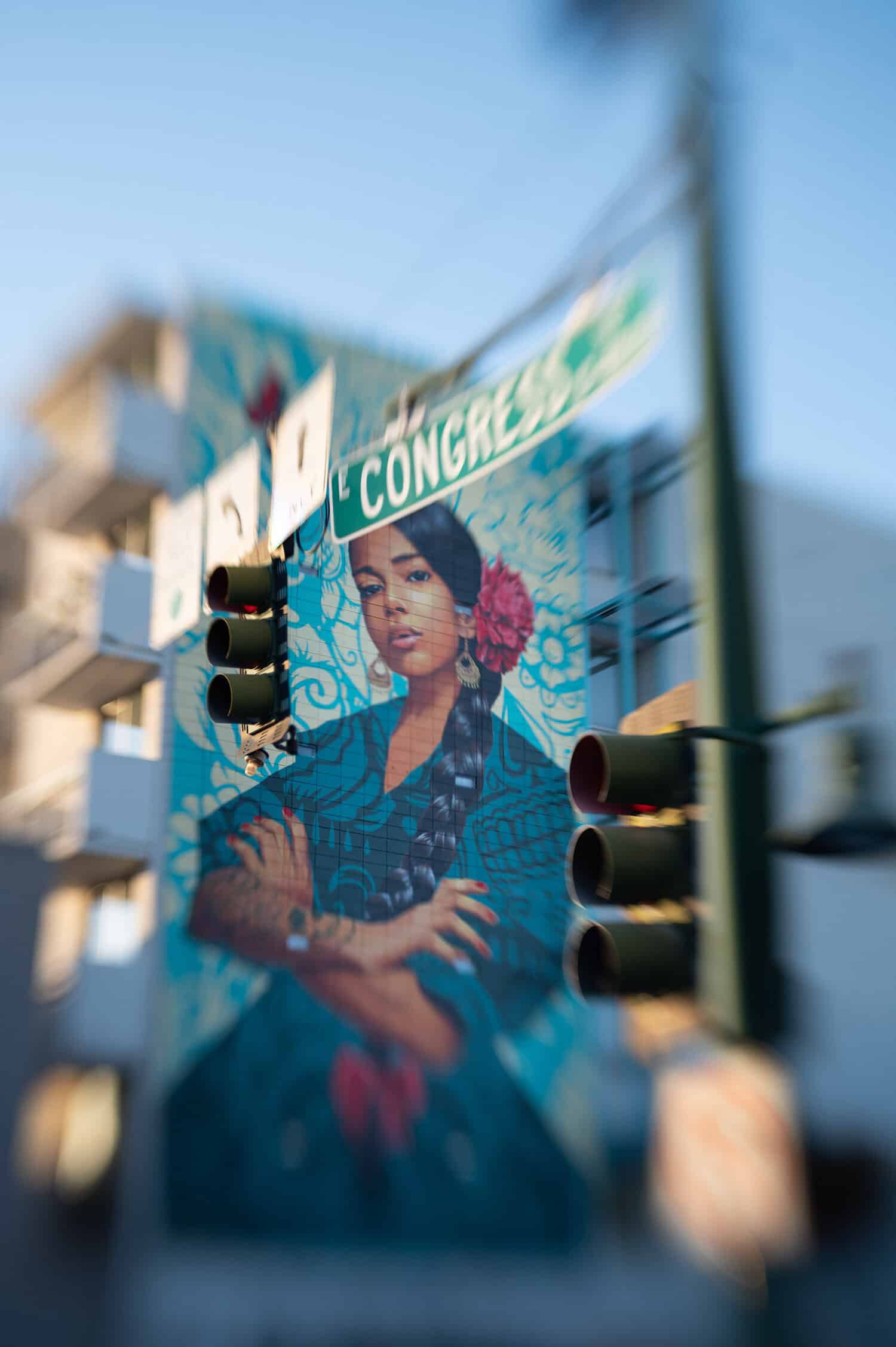
Location: San Xavier Del Bac Mission
San Xavier del Bac Mission, known as the “White Dove of the Desert,” is located on the land of the Tohono O’odham Nation. Founded by Padre Kino in 1692, this is Arizona’s oldest European structure and a classic example of Spanish Colonial architecture. It was named a National Historic Landmark in 1960, and the church itself is impressive both inside and out.
The mission is rich in detail, with statues, colourful murals, and religious symbols woven throughout its dramatic architecture. If you plan to take photos inside, remember that flash photography is not allowed, and you should always ask permission before photographing people.
Photo Tips:
Golden hour brings out the warm textures in the white adobe and the surrounding desert. You can keep photographing into blue hour, when the sky deepens and colours become even richer. A cloudy day provides soft, interesting skies without harsh highlights. Try using trees and branches in the foreground to frame the building, or get in close to capture details like the carved wooden doors, tilework, and the patina on the statues. With a wide-angle lens, you can fit in the cacti, mountains, or even the desert path leading up to the mission. After rain, look for puddles to create mirrored images of the building. A polarising filter will help cut glare and bring out sky colours, especially in the middle of the day. Explore all areas of the mission, and do not forget to look for dramatic silhouettes against the sunset sky.
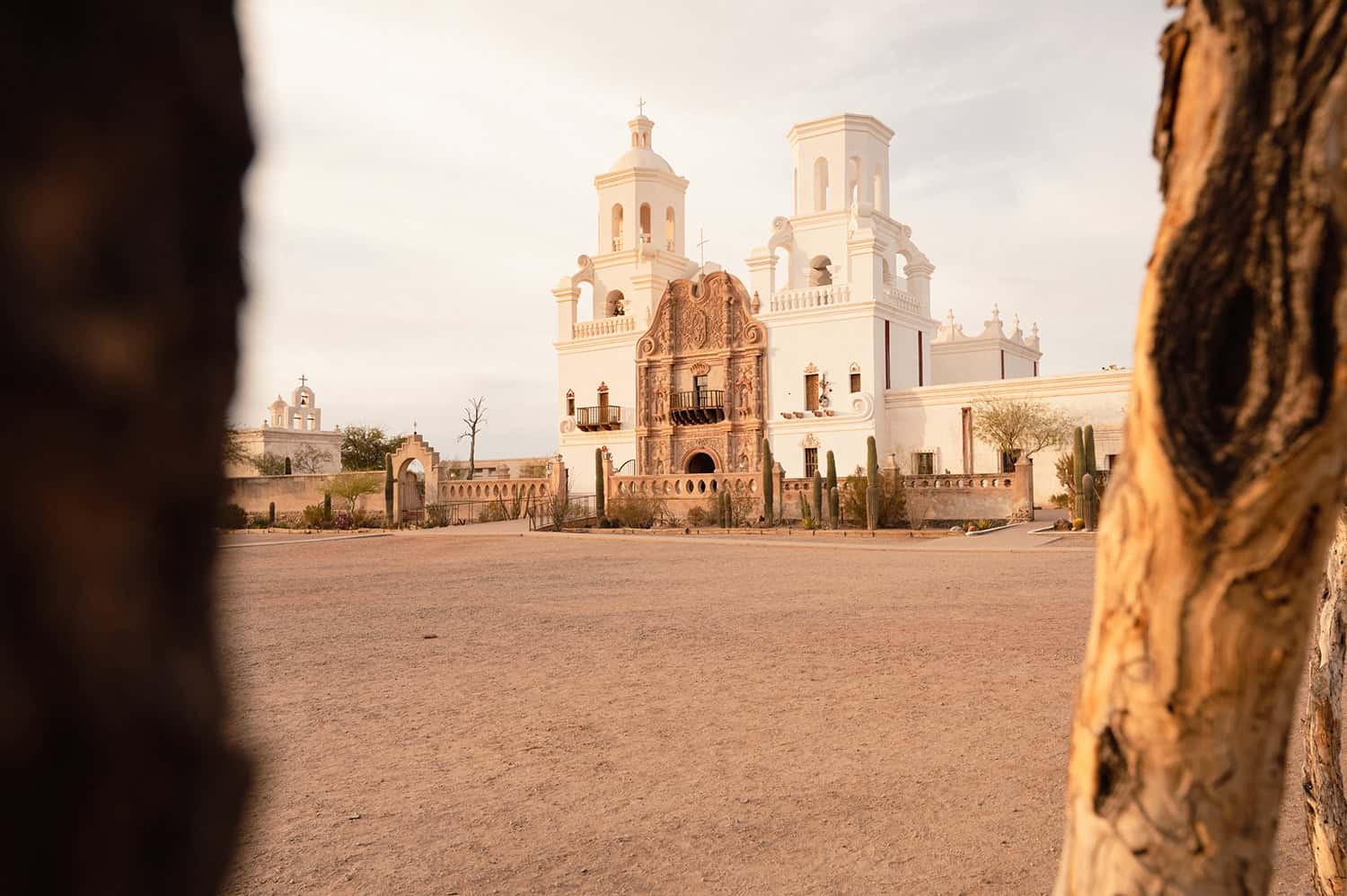

Saguaro National Park
Driving the nine-mile scenic loop through Saguaro National Park is a highlight for any photographer, especially close to golden hour when the landscape glows in orange and pink hues. Along the route, several pullouts offer great views of the Sonoran Desert’s rugged scenery. Micah View, the Desert Ecology Trail, Loam Verde Trailhead, and the Riparian Overlook are all worth stopping for different perspectives. Javelina Rocks is especially popular for sunset, when the cacti are silhouetted against the sky.
Photo Tips:
The best times for photography are just after sunrise or before sunset, when the desert is lit with soft, glowing colour. A polarising filter is useful here to reduce glare and deepen colours. Look for ways to include wildflowers, rocks, or trail lines in the foreground to add depth. Side lighting in the morning or late afternoon casts dramatic shadows that emphasise the unique shapes of the landscape.
For close-ups, explore the trails like the Desert Ecology Trail or Loam Verde Trailhead, where you may find cacti in bloom or other interesting desert details. A macro lens can help you capture smaller plants and textures. My favourite moment was photographing sunset at Javelina Rocks, positioning myself behind a saguaro to catch the deep golden sun as it set. A tripod is helpful for low light and night sky shots, but keep your gear light, as hiking with too much can be uncomfortable.
Wildlife like javelinas, coyotes, and birds of prey are most active around dusk. To stay safe, stick to marked trails and you will be able to enjoy the park while remaining immersed in the Sonoran Desert.
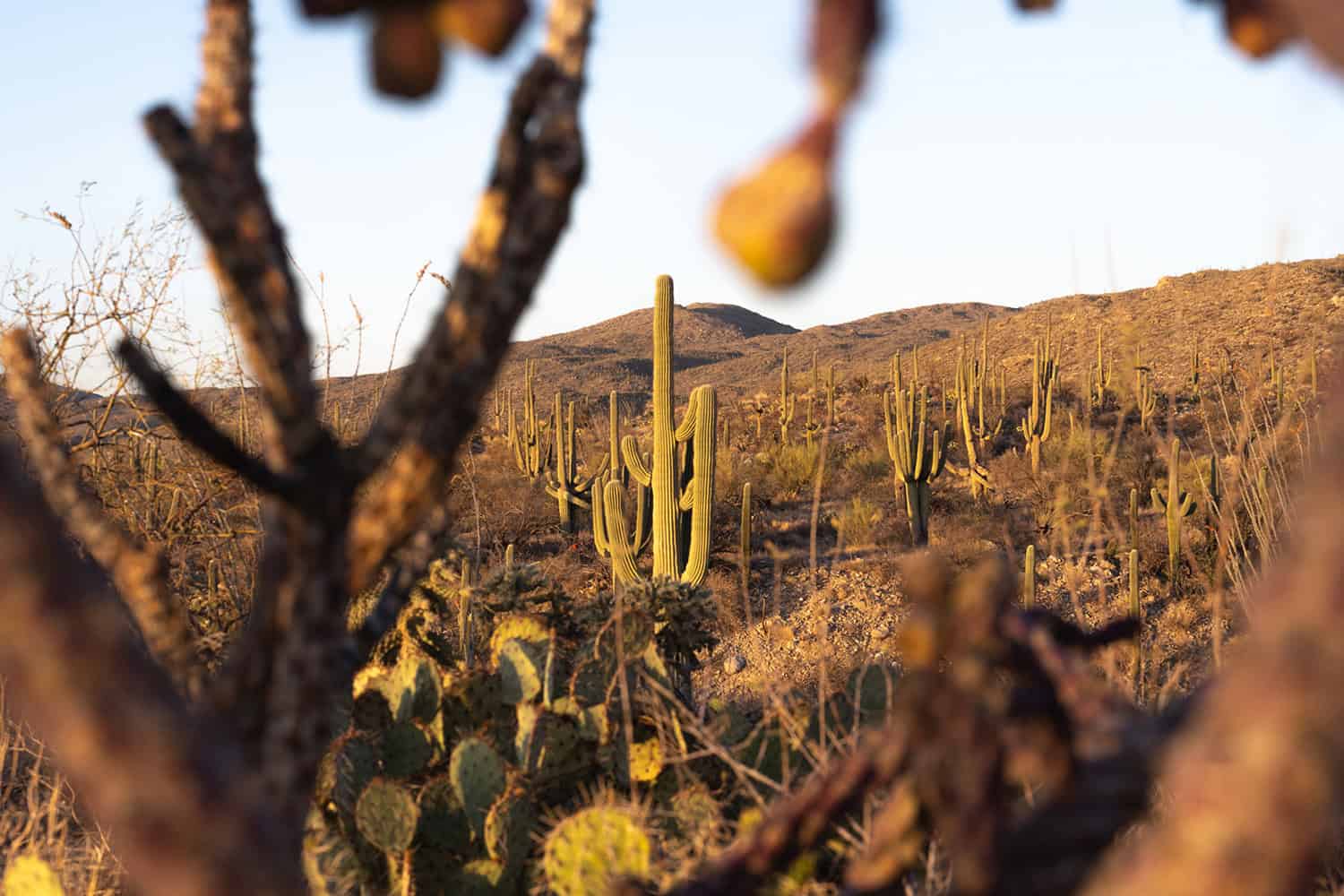
Keen to read more about photography locations in the US?
A Photographer’s Guide to Northern Arizona
Photographing California’s Death Valley National Park
Tips for Visiting Bryce Canyon National Park, Utah
Travel and landscape photographer from Australia who is far more comfortable in a pair of flippers than heels! Having worked for publications such as Lonely Planet, Wanderlust and the Sunday Times, Lisa founded The Wandering Lens to share destination guides to the worlds most photogenic places and outdoor experiences.

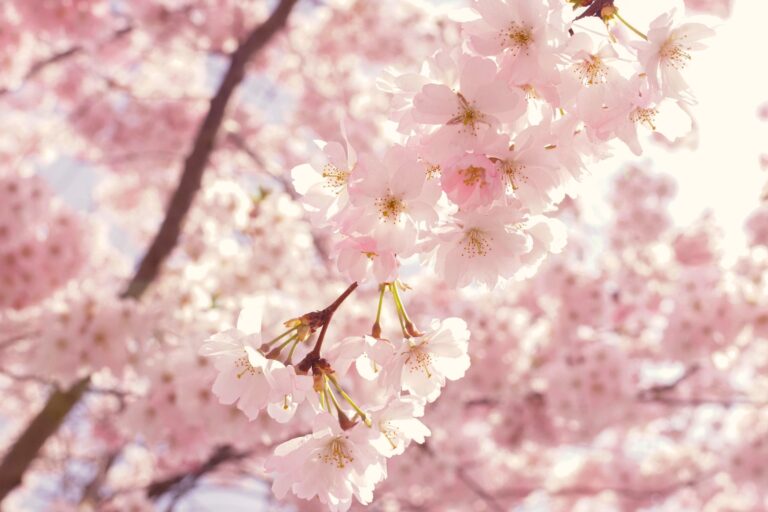
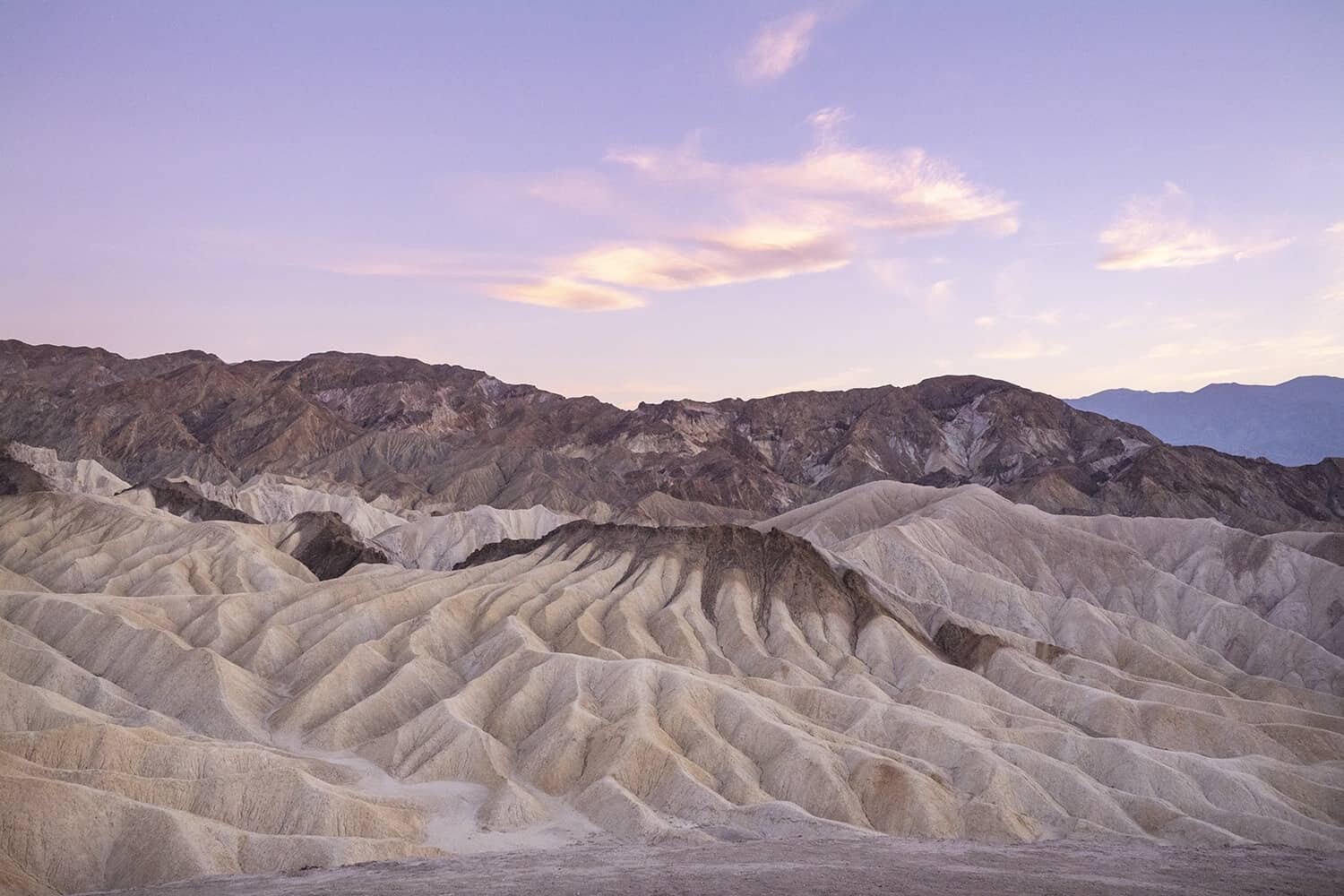
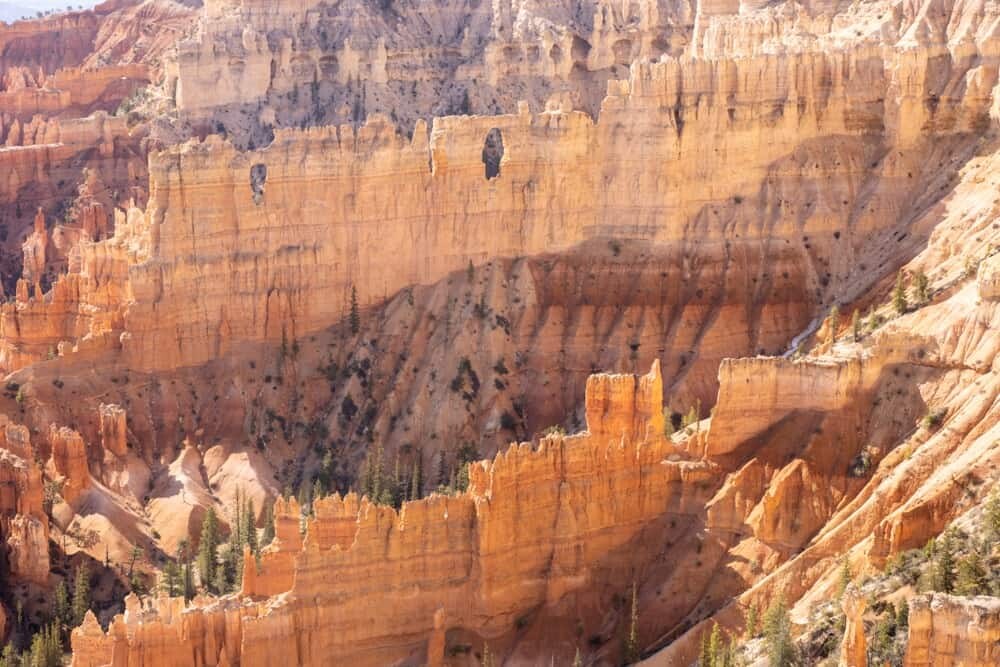
Leave a Comment